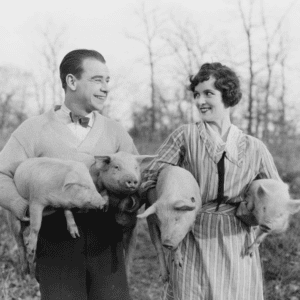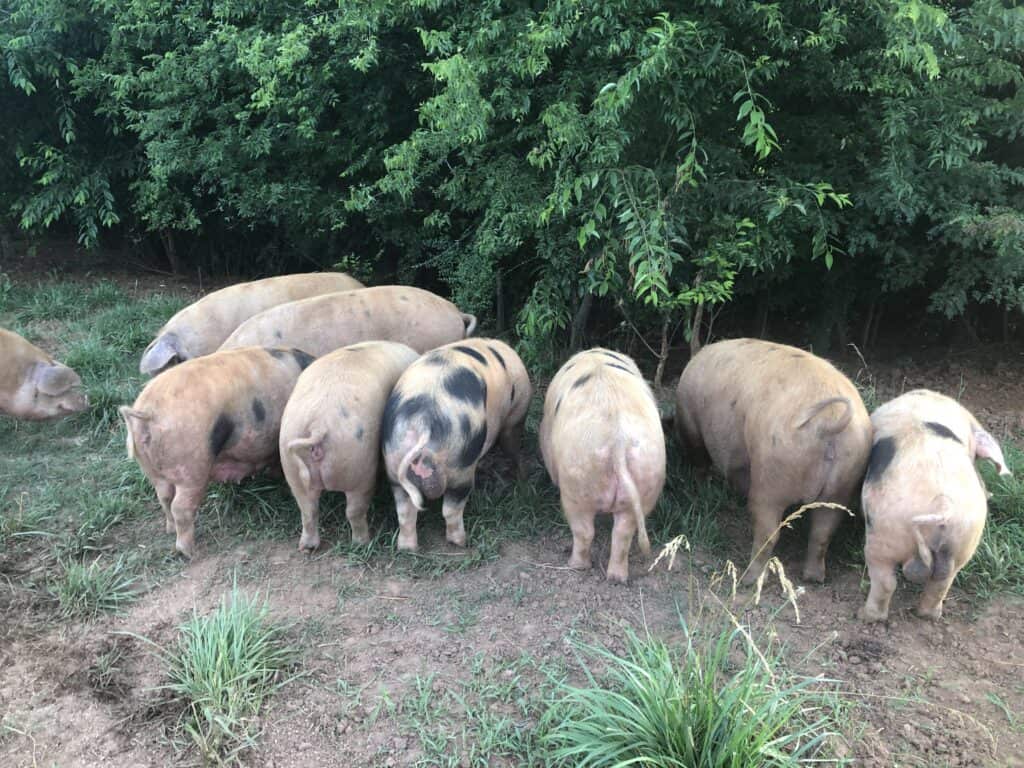The Divine Swine—Let’s Honor this Amazing Animal.
The history of the pig (Sus domesticus) is quite a story. Arguably the first
domesticated animal for meat production, the archeological evidence points to
domestication between 13,000 and 11,000 years ago.

Pigs are monogastric omnivores that share an incredibly high similarity to
humans. I often call them 4-legged humans when discussing the pigness of the pig
among friends. Much like humans, pigs are highly adaptable to many climates and
environments. They are also highly intelligent animals, quite capable of foraging
on many different foods. It is for that reason that many early explorers would
carry pigs with them from Asian and European countries to explore the world. It
was common practice for explorers to drop pigs off to live, breed and build up a
readily available food source upon their return.
Pigs, like many of our other domesticated animals, get a terrible rap.
Not sure why… but can certainly speak to some of these common misconceptions.
- Pigs are dirty: No, some of the cleanest animals on the planet. They cake
themselves with mud to protect them from sunburn, cool off and reduce
pathogens on their skin. Humans take mud baths to clean their
skin…borrowing a tradition from our swine relatives. - Pigs are destructive: Well, can’t really argue with this one. Pigs like to root
and can turn soil over quickly. They disturb the land in pursuit of grubs,
worms and the latent seed bank that is on the forest floor. Used properly,
this destructive disturbance is just what the ecology needs. - Pigs metabolize many shared nutrients and minerals the same mechanistic
way humans do. Properly raised/fed/pastured pigs are extremely high in
Vitamins D, A & E. Additionally, pastured pork has an extremely robust
balance of omega 3 & 6 fatty acids. Pastured pork is a super-food. - Salt-cured pork can last for years without refrigeration. Fresh pork requires
no aging and can be enjoyed immediately. Using a scalding/scraping
process, the skin can remain on the carcass. This is a truly unique advantage
to pork for curing and aging. - Pastured pigs till land and remove dead material and underbrush. Reducing
fire risk, opening the latent seed bank, and encouraging decomposition of
material on the ground. - Also…. Bacon! Did we mention Bacon?

Adelyn with Brutus & Olive- Our breeding pair circa 2017.
Roughly 98% of the pork raised in the US today is done in a confinement
operation. The animals are over-crowded, fed poorly and never get access to sun
exposure. Industrial pork is still a far cry better than frosted mini-wheats or pop
tarts, but we can do way better. This once cherished fat has been reduced to
quips making fun of Southern Heritage. Nearly every single adult and child in the
US was intimately familiar with lard just 100 years ago. Did you know that Proctor
and Gamble dyed Crisco white to resemble lard?
Did you know?
Proctor and Gamble dyed Crisco white to resemble lard.
How do you raise a healthy pig? Great question. For starters, pigs should be raised
on the land—not a confinement house. They should have access to fresh air,
sunshine and ground to root and forage. Pigs are omnivorous and can thrive on a
variety of foods. Best to avoid GMO grains and it appears avoiding soy in their diet
is beneficial to the fatty acid profile of their fat. Constant movement and rotation
are critical. Generally, I would recommend that they never spend more than 8-
days on the same patch of dirt. This keeps the destructive disturbance to an
appropriate level and moves them off their excrement. By contrast, a
confinement pig operation has no dirt, no sunshine and concentrates their feces
in manure lagoons that turn this vital organic matter into a toxic slurry.

Turn your back on industrial skincare and accept the lard in your life!
Here at Farrow, we choose to lead with lard. Farrow highlights the incredible
benefit and utility when raising pigs, the right way. We honor this amazing
creature by making sure none of the fat goes to waste. These incredible animals
deserve respect for all they do to heal and disturb the land. The Swine is Divine,
and the Lard is Hard. Raise ‘em right and you have nutritious food and incredibly
effective skincare products.